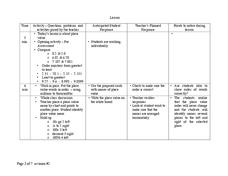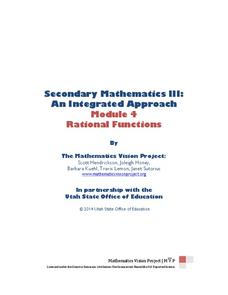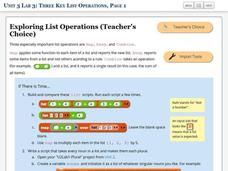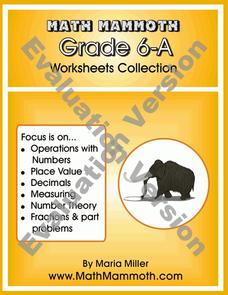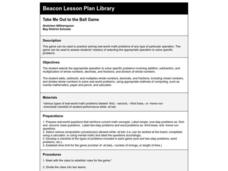Curated OER
Natural Logarithm Rules
In this algebra worksheet, learners solve problems of logarithm using addition, subtraction, multiplication and division. There are 8 questions with an answer key.
Curated OER
Political Cartoons of Political Machines: New Your City
Students discover details about political machine bosses. In this political cartoon lesson, students use the provided political cartoon analysis worksheet to analyze cartoons of Boss Tweed. Students then compose essays about the...
Curated OER
The 7 "Hats" of the President
Learners explore the responsibilities of the President. In this U.S. government lesson, students examine the provided sources related to the President' s roles as Chief of State, Chief Executive, Chief Jurist, Chief Diplomat, Chief...
Curated OER
Vocabulary Dictionary Drill
Investigate vocabulary terms related to communities. First your class generates a list of vocabulary terms related to the study of communities. Working in small groups, they compete in a dictionary drill to discover the meaning of the...
Curated OER
Patterns Here, There, and Everywhere!
Upper graders access the Microsoft Word program and create patterns by utilizing certain keys on the keyboard. They create picket fences, smiley faces, and hearts. It seems that this lesson has as much to do with keyboarding skills as it...
Curated OER
Subtract Positive and Negative Integers
Review the concept of subtracting positive and negative integers. Learners review the rules for subtracting integers, use manipulatives to visualize the process, and complete an assessment.
Curated OER
Place Value
Practice place value skills with this lesson. Learners put numbers in order from greatest to least, identify the values of particular numbers, and engage in an activity to compare numbers using manipulatives.
Curated OER
Conservation for the Ages
Students use the Internet to research a topic about energy conservation. They summarize the research information in an original studenT book and visit a local elementary school to present their projects.
Curated OER
Transportation Math
Students practice their problem solving skills. In this addition and subtraction lesson, students solve story problems regarding the delivery of consumer goods.
Curated OER
Number Crunching
Students are shown 3-5 different types of crunches as well as the correct Fitnessgram curl-ups. They do sets of different types of crunches and count the total number by using multiplication skills. Studnets do multiple sets and count...
02 x 02 Worksheets
Inverse Variation
Discover an inverse variation pattern. A simple lesson plan design allows learners to explore a nonlinear pattern. Scholars analyze a distance, speed, and time relationship through tables and graphs. Eventually, they write an equation to...
Mathematics Vision Project
Module 4: Rational Functions
Time to study the most sensible function — rational functions! The seven-lesson unit develops the concept of a rational function through a connection to rational numbers and fractions. Scholars graph functions, solve equations, and...
Noyce Foundation
Cereal
Find the best protein-packed cereal. The short assessment task covers equivalent and comparing ratios within a context. Pupils determine the cereal with the highest ratio of protein. A rubric helps teachers with point allotments for...
5280 Math
Capture the Points
Play a game of capture the points. Young scholars receive a number line with specific points graphed and must write an inequality that captures all the points. The second task of the algebra project is to write an inequality with...
Curated OER
Martin Luther King and Malcom X on Violence and Integration
Dr. Martin Luther King and Malcolm X were contemporaries. Both were gifted orators, both were preachers, both were leaders during the Civil Rights era, both were assassinated. But the two had very different views on violence and...
Civil War Trust
Map the Civil War
Mapmaking was a very important element in successfully planning attacks on enemies during the Civil War. Guide pupils through the process of pacing to find the average length of their steps, measure the distance between one object to the...
Virginia Department of Education
Chemical Bonds
How are chemical bonds similar and how are they different? Provide your young chemists with the resources to more thoroughly understand the concepts of ionic and covalent bonds. Pupils research these topics, diagram examples of each...
LABScI
Kinematics: The Gravity Lab
Falling objects can be brutal if you don't protect your noodle! Scholars explore the motion of falling objects through measuring short intervals to determine if the distance traveled varies with time. Building off of this, scholars...
Beauty and Joy of Computing
Three Key List Operations
Develop an understanding of the Map, Keep, and Combine operations. The lab leads the class through the exploration of three list operations. Each task contains a self-check to measure scholars' understanding of the operation in the task.
Channel Islands Film
Arlington Springs Man: Lesson Plan 3
Imagine being part of a team of scientists that discover the oldest human remains in North America. Imagine being part of the crew that documents this discovery. Class members get a change to be part of such an exciting adventure in a...
Curated OER
Simple Past-Positive Sentences #2
In this simple past tense worksheet, students use words and phrases given to form positive sentences in the given tense. Answers may be submitted online for review. ESL appropriate but not exclusive.
Curated OER
From Probability to Combinatorics and Number Theory
Students see how division is used to help solve probability problems. They use tables as data structures where they are used to count outcomes and to compute probabilities. Students use games to help solve probability problems.
Curated OER
Take Me Out to the Ball Game
Students play a math game which assesses their mastery of selecting the appropriate operation to solve specific problems.
Curated OER
Is There Enough String?
Students illustrate the order of operations and evaluate expressions using the order of operations. They create and correctly at least 3 out of 4 expressions using the order of operations.








